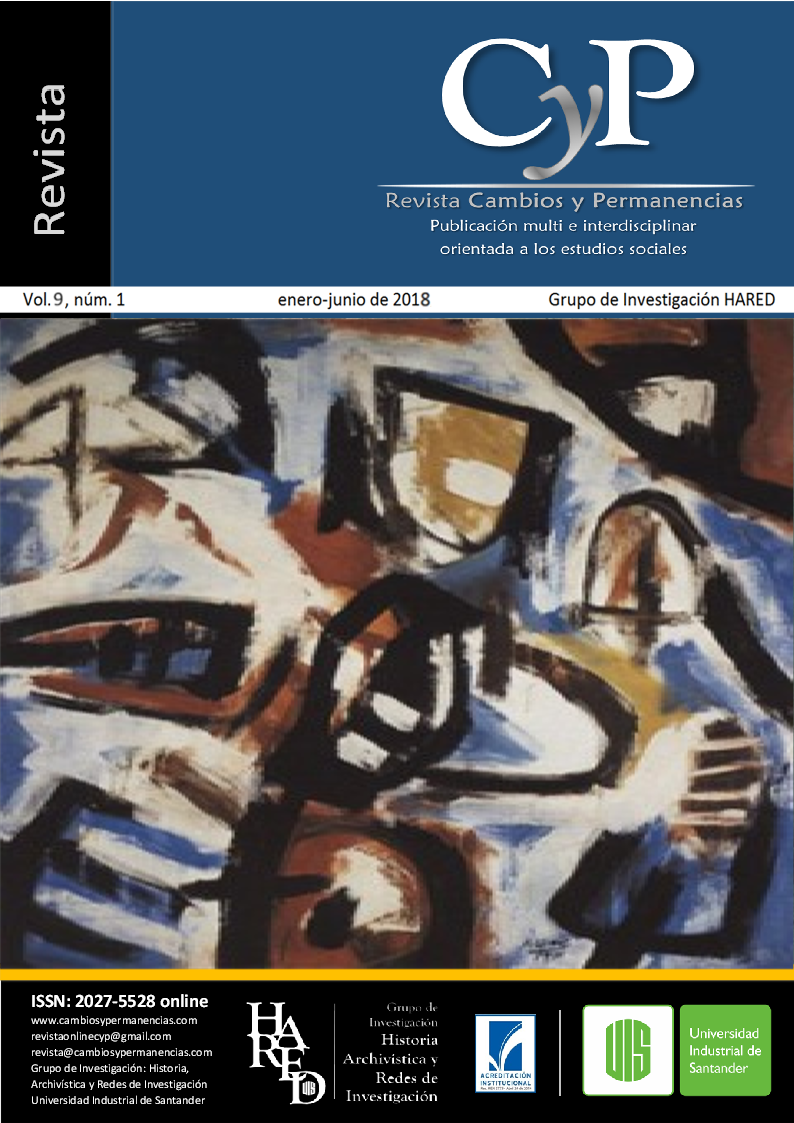Weaving memories: transmission of knowledge of misak weavers from the second half of the 20th century
Published 2018-06-01
Keywords
- Indigeous women,
- misak,
- memory,
- gender
How to Cite
Abstract
This research presents the exploration of weave knowledge through the memories of Misak weaver Mamas older than 50 years after the second half of the 20th century, in the Guambia shelter, municipality of Silvia, Cauca, Colombia. In fact, the fabric is considered as the scenario in which memories are conveyed that represent constructions of gender, territory and worldview, such that they induce to inquire about whether the weave is a "vehicle of memory" in which the Mamas weave strategies of transmitting knowledge to new generations. Consequently, I offer this work as an attempt to present a reflection on the fabric and this seen as a visual communication means that denotes the affiliation to an ethnic group, knowledge of gender, status, geographic spaces among others and in whose framework there is a transmission of knowledge.
Downloads
References
Astudillo Delgado, A. (1981). Situación socio-cultural de la mujer indígena guambiana. Popayán: Universidad del Cauca.
Baena, J. E. (2004) Dimensión estética en el diseño de los chumbes paeces y guambianos. ¿Qué es diseño hoy? Santiago de Cali: Universidad Icesi, pp. 1-13.
Camelo, N. D. M. (1994). Textiles guambianos. Quito: LADAP.
Cardona, J., Orozco, R. y Muñoz, S. (s.f.) Iconografía de las mochilas misak. Bogotá: Universidad Nacional de Colombia.
Contreras, B. J. (2015) Reconocimiento del valor cultural de la producción artesanal a través del intercambio de saberes. Xalapa, Veracruz: Universidad Veracruzana.
Corpus, A. (2005). «Simbología Nasa.» Consultoría, Popayán.
Costa, L. de F. M. da (2009). Los tejidos y las tramas matemáticas. el tejido tikuna como soporte para la enseñanza de las matemáticas. Leticia, Amazonas: Universidad Nacional de Colombia, sede Amazonia.
Espejo, D., Sánchez, E., Arnold, W. (2013). El textil tridimensional: la naturaleza del tejido como objeto y como sujeto. La Paz: Fundación Interamericana e Instituto de Lengua y Cultura Aymara.
Hall, S. (2013). El trabajo de la representación. En Sin Garantías, Eduardo Restrepo, Catherine Walsh, y Víctor Vich (Comp.) (pp. 459-496). Quito: Nacional.
Jelin, E. (1998). Los trabajos de la memoria. Lima: Instituto de Estudios Peruanos.
Paredes, J. (2010). Hilando fino desde el feminismo comunitario. La Paz.
Sanchéz, P. (2015). Hilar cronologías, para tejer temporalidades en el estudio etnohistórico de los tejidos indígenas. Historia y Espacio (42), pp. 55 - 69.
Schwarz, R. A. (1976). Hacia una antropología de la indumentaria: El caso de los guambianos. Revista Colombiana de Antropología, (20), pp. 296-334.
Sosme Campos, M. A. (2013). Tejedoras de Esperanza: empoderamiento en las Mujeres de los Grupos de Tejedoras de la Sierra de Zongolica, Veracruz. Xalapa: Universidad Veracruzana
Tunubala, J. (2017). Parteras del Pueblo Misak: Mujer Hilando Conocimientos de Vida y de Re-existencia. Cali, Valle del Cauca: Universidad del Valle.
Ventura, D. (19 de febrero de 2017). BBC La British Broadcasting Corporation. Recuperado de http://www.bbc.com/mundo/noticias-38982053


